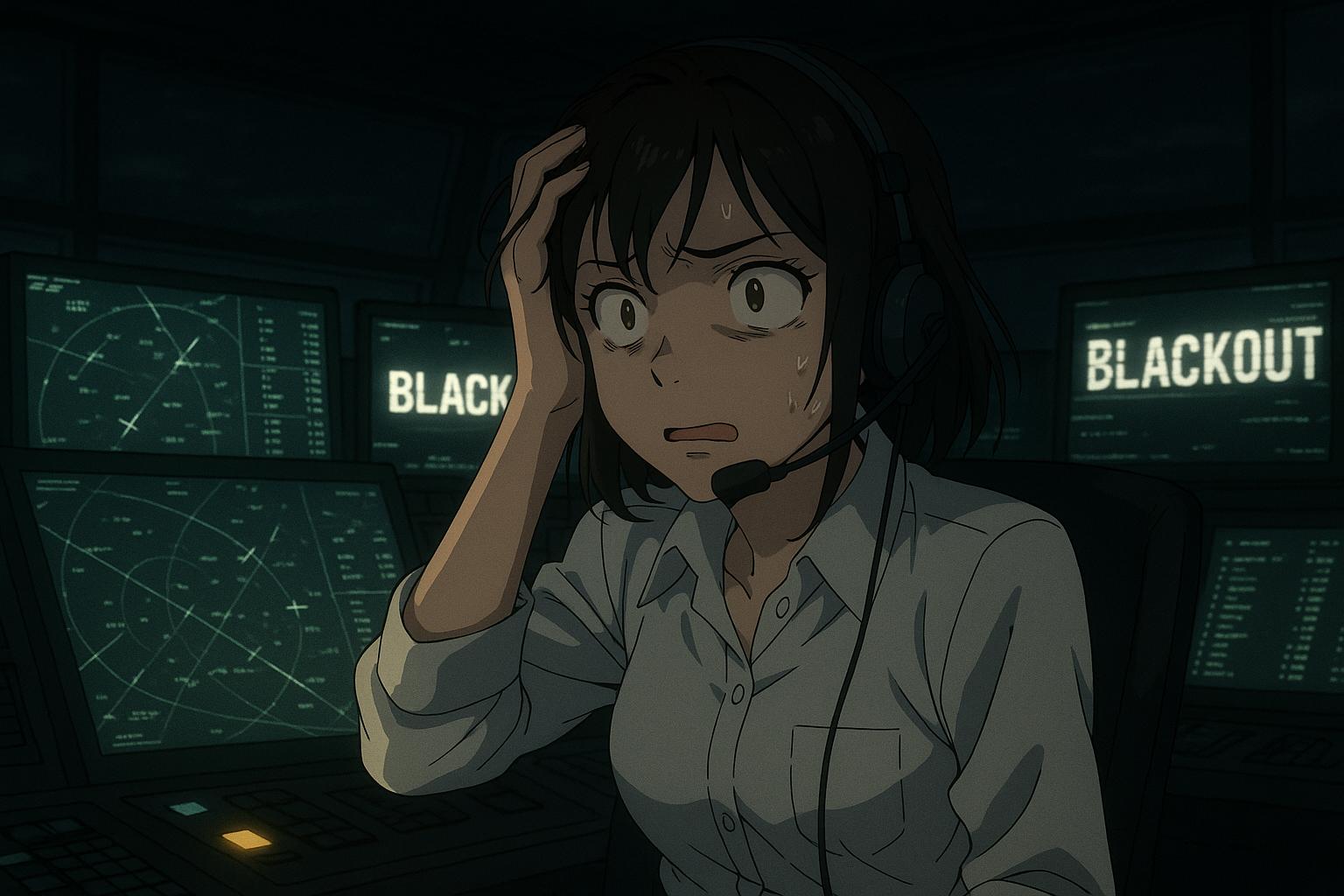A deeply concerned air traffic controller has raised alarming warnings about the precarious situation at Newark Liberty International Airport, a vital hub that serves more than 1,000 flights daily. The anonymous 39-year-old worker, who resides in Philadelphia, has been thrust into the spotlight following a series of distressing incidents that highlight ongoing operational issues. She describes a nightmarish work environment fraught with technological failures and fatigue, leading her to refuse future flights from the very airport she helps oversee.
On May 9, the controller experienced a catastrophic system blackout, leaving her without crucial data on the positions, speeds, and altitudes of four planes for a harrowing 90 seconds. This incident is one of several that have occurred over the past year, raising fears of imminent disaster. Previous outages on April 28 and May 11, while met with different consequences, only serve to underline the unsafe conditions at Newark. In her written testimony, she expressed her reluctance to board flights departing from Newark, stating, “If Newark’s air traffic control problems don’t get fixed, I believe it’s only a matter of time before we have a fatal crash between two planes.”
Her concerns are echoed by a broader narrative of systemic failures within the U.S. Federal Aviation Administration (FAA). The agency is struggling under a considerable staffing shortfall, operating approximately 3,500 air traffic controllers below its target, a situation exacerbated by old technology and infrastructure. A recent report highlighted that various critical systems still depend on outdated tools like floppy disks, and a modernization initiative that began in 2007 remains unfinished. The FAA has acknowledged that chronic underfunding—affected by partisan politics and budgetary constraints—has left it unable to adequately secure the air traffic control system, leading to the kind of near misses that worry both controllers and aviation experts.
As Newark's air traffic control operations were shifted to a facility in Philadelphia last summer in an attempt to ease congestion along the northeastern corridor, staffing has dwindled. From a complement of 30 controllers, it now hosts just 24, diminishing even further the capacity to manage flights safely. The consequences of this move have manifested in severe communication failures, as controllers are often unable to manage even a dozen aircraft simultaneously. Alarmingly, over a third of Newark's air traffic controllers have taken trauma leave, indicating that the mental toll of working under such intense pressure is becoming unmanageable.
The FAA has announced plans to implement temporary flight reductions at Newark to address these chronic issues. Transportation Secretary Sean Duffy revealed that the airport will be limited to a maximum of 28 arrivals an hour until mid-June, with further restrictions expected through October. This strategic pause aims to improve the situation but casts a shadow over the future of the vital airport. United Airlines, the dominant carrier at Newark, has already begun reducing flights and supports the government's limitations, recognising the urgent need to streamline operations amid the chaos.
This precarious situation not only poses a risk to aviation safety but reflects a deeper issue with the U.S.'s overall air traffic management system—a system that experts argue requires significant reforms to effectively operate in the 21st century. Calls for an independent air traffic control entity have been made, akin to models successfully adopted by other countries, such as Canada, to mitigate conflicts of interest and streamline operational efficiency. Without these vital changes, the controller warns, the alarming incidents at Newark are likely to echo throughout the entire national airspace system.
In her poignant conclusion, she expressed a profound sense of hopelessness, underlining her belief that safety is being sacrificed at the altar of inadequate investment and outdated practices. “I don’t write this because I want our working conditions to improve,” she asserted, “but to raise the alarm. If the authorities don’t fix this mess immediately, people will pay with their lives.”
Reference Map: 1. [1] 2. [2] 3. [3] 4. [4] 5. [5] 6. [6] 7. [7]
Source: Noah Wire Services
